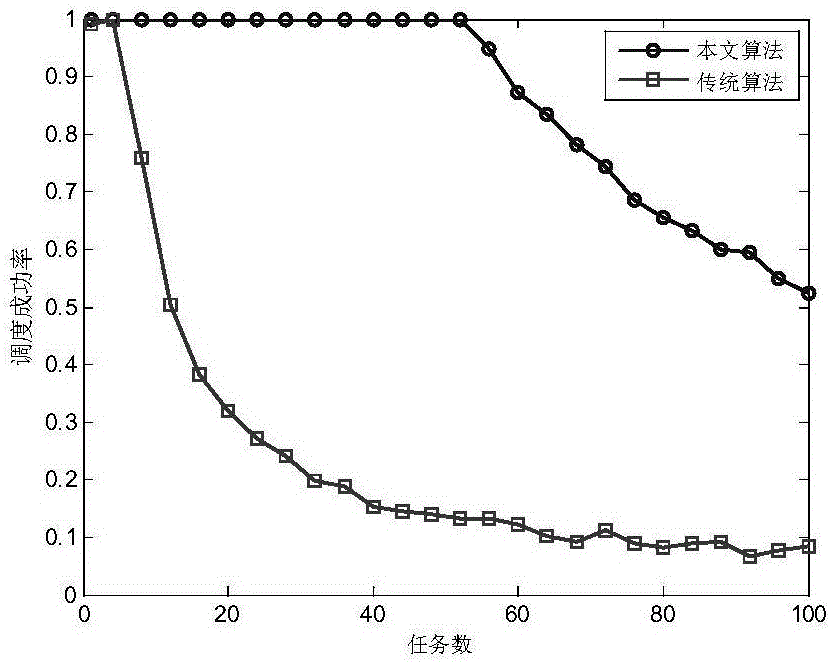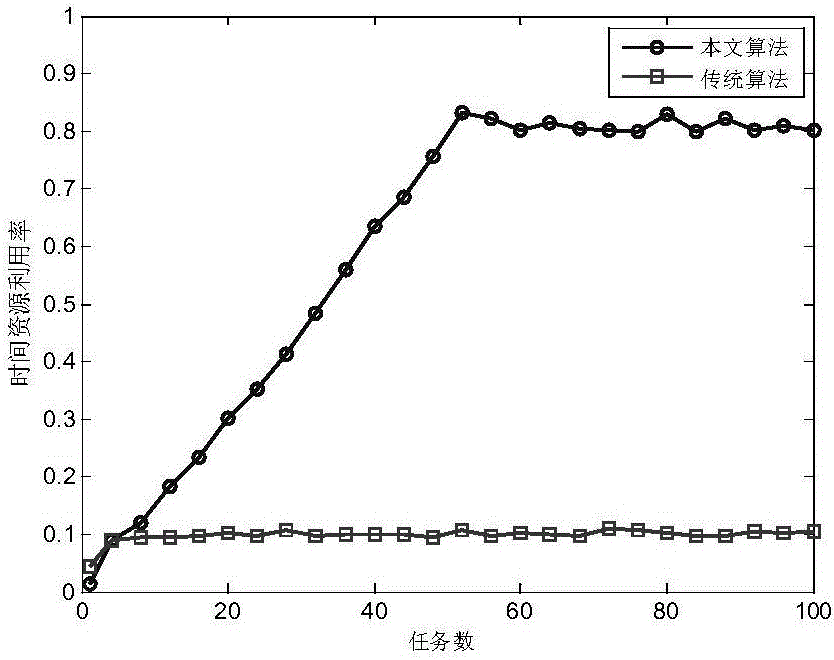Pulse interlacing-based inverse synthetic aperture radar (ISAR) imaging self-adaptive radar resource scheduling method
A pulse interleaving, imaging radar technology, applied in special data processing applications, reflection/re-radiation of radio waves, measurement devices, etc., can solve problems such as low resource utilization
- Summary
- Abstract
- Description
- Claims
- Application Information
AI Technical Summary
Problems solved by technology
Method used
Image
Examples
example
[0091] Example: Imaging Task Scheduling Experiment
[0092] Simulation experiment: Assume that the radar transmits a chirp signal, the transmission pulse width is 10μs, the minimum pointer sliding step is set to 10μs, the time window is 1ms, the simulation time is 1s, the pulse transmission power is 4KW, and the average power of the radar is 500W. The distance from each target to the radar is 10-30Km.
[0093] It should be noted that since the range dimension of the target will affect the arrival time of the radar echo, in order to ensure the imaging quality, the receiving period of the pulse needs to be extended appropriately. If the distance between the radar and the i-th target is R i , the range dimension of the i-th target is Then the width of the actual received pulse of the i-th target should be set as:
[0094]
[0095] After many simulations, it is found that when the number of targets is 50, the system's time resource utilization tends to be saturated. Taking...
PUM
 Login to View More
Login to View More Abstract
Description
Claims
Application Information
 Login to View More
Login to View More - R&D
- Intellectual Property
- Life Sciences
- Materials
- Tech Scout
- Unparalleled Data Quality
- Higher Quality Content
- 60% Fewer Hallucinations
Browse by: Latest US Patents, China's latest patents, Technical Efficacy Thesaurus, Application Domain, Technology Topic, Popular Technical Reports.
© 2025 PatSnap. All rights reserved.Legal|Privacy policy|Modern Slavery Act Transparency Statement|Sitemap|About US| Contact US: help@patsnap.com



